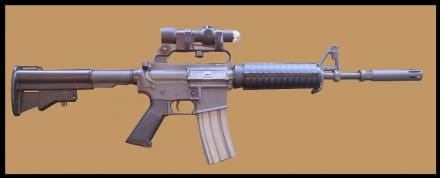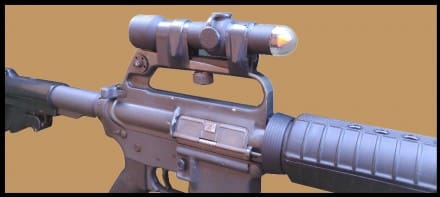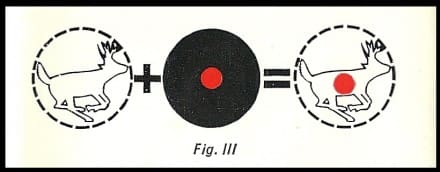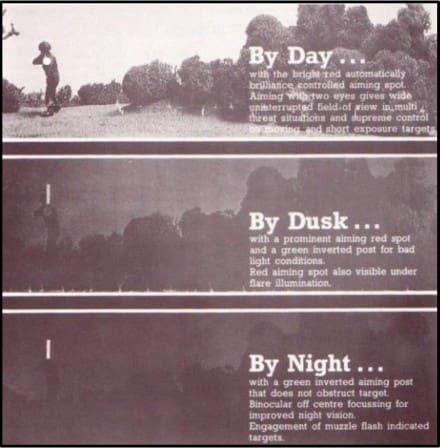Dr. Earl W. Burress, Jr. (Ph.D.)
(Major, USAF, Retired)
History was made on the night of November 21, 1970, as a task force of 15 American aircraft and helicopters (supported by an additional 101 warplanes in various roles) inserted a 56 person US Army assault team into the Son Tay Prisoner of War (POW) Camp located 23 miles west of the North Vietnamese capitol of Hanoi. The objective of the mission, officially referred to as Operation IVORY COAST, was to repatriate 65 American prisoners being held under brutal conditions by the Democratic Republic of North Vietnam. The raid was executed successfully, although the assault team failed to repatriate any allied POWs because the American prisoners had been relocated approximately four months earlier due to flooding within the camp. The entire ground operation, from insertion to extraction, was conducted in less than 29 minutes. During mission execution, the team neutralized approximately 40 enemy combatants without the loss of a single American serviceman’s life.1 Author’s Note: According to raid participant and author Colonel John Gargus (USAF, Retired), the enemy combatant kill count is a frequent point of discussion. It was initially reported to be in the hundreds, but subsequent reviews and analysis, primarily by raid participants, resulted in the revised number of approximately 40 enemy combatants killed.
The Son Tay Raiders used innovative combat tactics, acquisition procedures, and emerging technology to overcome the challenges faced on this historic mission. The GAU-5 variant of the CAR-15, for example, carried by some of the assault team members incorporated a number of features that are echoed in modern Special Operations Forces (SOF) M4A1 Close Quarters Battle Rifles (CQBRs). A live-fire comparison of a Son Tay GAU-5A/A replica and a CQBR replica was used to characterize the similarities and differences shared between the Son Tay carbines and modern SOF rifles. The historical website, Retro Black Rifle, indicates that two types of GAU-5 Carbines were used on the Son Tay raid. Both the GAU-5/A (also known as the Colt Model 610 XM177) and GAU-5A/A (also known as the Colt Model 649) carbines are visible in pre-mission photos.2
The GAU-5 Carbines (a USAF designation) were most likely assembled using Colt partial fence lowers, slick side uppers (uppers with no forward assists or spent case deflectors), and ten inch barrels with a 1/12 twist and a barrel diameter of .625 inches under the front sight base. The “furniture” included an aluminum stock (a predecessor in style to the Colt Fibrite N1 stock) mounted on a two position buffer tube, a pair of six-hole handguards, and an M-16A1 style grip. The barrel was mounted to the upper using a flat slip ring and capped with a 4.5 inch moderator. The assault teams are reported to have used a number of types of slings, including improvised slings consisting of parachute cord and surgical tubing.
The GAU-5A/A Carbines were similar to the GAU-5As, although this rifle utilized a full fence lower, which is very similar to the lower design used in many contemporary civilian and military AR-15s. These weapons used a tapered delta ring to mount an 11.5 inch barrel capped with a 4.5 inch moderator and grenade ring. Additionally, it is believed that the front sights of the GAU-5A/A Carbines were not equipped with bayonet lugs.3 At some point during the mission rehearsal period (between September and November 1970) the rifles were fitted with Singlepoint brand Occluded Eye Gunsight (OEG) “red dot” scopes attached using a carry handle mount. The Son Tay Raid was the first documented example of a US SOF team using a “red dot” type optic in combat.4
To many historians and enthusiasts, the defining feature of a Son Tay rifle is the Singlepoint OEG scope. According to The Son Tay Raid: American POWs in Vietnam Were Not Forgotten, the night shooting performance of assault team members was limited by the conventional field sights mounted atop the carry handle of the GAU-5 Carbines. Team members discovered an advertisement for the Singlepoint OEG scope by the Normark Corporation and commercially acquired a unit for evaluation. Testing showed that the scope was constructed to military specifications and was able to increase the night engagement capability of the assault teams. The team purchased the first scope in mid-September 1970 and ordered another 49 units prior to the end of October 1970. Each scope was priced at $49.95 per unit.5 Author’s Note: $49.95 in 1970s dollars adjusts to approximately $305.00 in 2015 dollars.
The Singlepoint consisted of a blacked out tube which contained a protruding plastic fiber optic, a clear lens cap, a “black back plate” behind the fiber optic with a “pinhole” which was used to create the glowing aiming dot, adjustment screws, and a clear or white opaque plastic dome. Ambient light would illuminate the fiber optic through the dome and the calibrated “pinhole” would let light through to create the aiming dot. The aiming dot was believed to have been approximately 16 Minutes of Angle (MOA) in diameter, as viewed through the calibrated “pinhole” in the “black back plate”. The shooter used binocular vision to superimpose the aiming dot (as viewed through the shooters dominant eye) over the target (as viewed by the shooters non-dominant eye).6
A lack of ambient light resulted in the loss of the fiber optic aiming dot, which rendered the sight ineffective in darkness. This has triggered speculation that the Son Tay assaulters may have used a unit that contained a vertical mark highlighted with radium paint or a tritium vial which was used as an alternate aiming point under low or zero light conditions. The illuminated mark was referred to as the “green inverted post” in Normark promotional material. In Spec Ops: Case Studies in Special Operations Warfare: Theory and Practice Admiral William McRaven (USN, Retired) addressed this issue in the following passage, “This sight allowed the Special Forces personnel to identify their target under low light conditions. (For the actual raid, flares were dropped from a C-130 to provide the needed light.)… It was this innovative technology that directly contributed to the lack of American casualties. Of the fifty-six men in the raid force, only one man sustained a gunshot wound as opposed to over forty enemy killed.7 Author’s Note: During testing, the author attached a modern tactical light to the weapon to determine if the lighting reflected from a 3 yard target would be sufficient to illuminate the red dot. This effort was not successful. The author did learn that if the tactical light was in the vicinity of the dome it was possible to generate an aiming point.
It should be noted that pre-mission color photos appear to show clear domed Singlepoint scopes with a red fiber optic element. This scope was selected because it was sturdy, light (approximately 7 ounces), small (6.75 inches), and allowed rapid target acquisition and engagement. The Operation IVORY COAST After Action Report (AAR) indicated that soldiers were able to develop the skills necessary to transition from using iron sights to the Singlepoint sight in between 30 minutes to two hours. The AAR also indicated that only one soldier out of approximately twenty was unable to adapt to the use of the scope.8 The scope mounts, which consisted of a pair of one inch steel strap rings on a plastic (possibly Delrin) bar, proved to be problematic. The mounts failed to sufficiently secure the scopes and were subsequently reinforced with black electrical tape. The results of the GAU-5 Carbine/Singlepoint pairing were summarized in the following passage from the AAR, “…At a distance of 25 meters, the poorest marksman could place all rounds in a 12 inch circle at night. At a distance of 50 meters, the same shooter could place every round in an E type silhouette both day and night. The only advantages found in day shooting were speed in engaging the target and shifting fire. The single point could not compare with open sights for accuracy. At night the situation reversed. Shooters could engage targets and shift fire just as rapidly as in day fire with the same amount of accuracy… With the proper training, the Single Point Sight is an invaluable aid to the infantry rifleman. There are no liabilities to the sight other than additional weight. The key to the sight is the fact that the open sights are still clear, giving the shooter an option of sights depending on time and illumination”.9 Despite this success, it appears that SOF did not widely adopt a “red dot” type optic in combat until the Aimpoint optic was used in the 1980s.
The weapons used in the live-fire comparison were both semi-automatic Colt carbine replicas assembled using representative components in an effort to simulate weapons handling and performance characteristics in an accurate and cost effective manner.
To be concluded in Part II…
Special thanks to Mr. Matt Babb (former USA Artillery), Mr. John Brace, Mrs. Kelsey Burress, Major Jim Collins (USAF, Retired), Mr. Robert Corcoran (former USAF C-130 Pilot), Gunnery Sergeant Erick Findley (USMC, Retired), Mr. Eric Fordon (former US Navy Diver), Mrs. Judy Fordon, Colonel John Gargus (USAF, Retired), Captain Augustine Kim (ARNG), Sergeant Travis Pierce (former USMC Infantry & current Team Leader for the Liberty County Texas SWAT Team), Lieutenant Colonel Joe Rawlings (USA), Mr. Caleb Rawlings, Mr. Richard Reuter, Captain John Thomas (USAF, Retired), TSgt Andrew Tijerina (USAF, Retired), and Colonel Scott Walker (USAF, Retired) for their assistance as evaluation participants or as members of the peer review team.
Dr. Earl W. Burress, Jr. (Major, USAF, Retired) holds a Doctorate in Business Administration (with specializations in Homeland Security and Aviation Operations) from Northcentral University. While on active duty, Dr. Burress served as a Minuteman III Missile Combat Crew Member and a C-130 Pilot. Dr. Burress completed six combat deployments and logged over 1,000 hours of combat flying while conducting tactical airlift and special operations support missions throughout Afghanistan and Iraq. Additionally, Dr. Burress developed an Irregular Warfare Training Program for the 34th Combat Training Squadron while supporting the Joint Readiness Training Center as the Senior Air Force Observer/Controller for Airlift Operations. Dr. Burress completed his Air Force career in military Test & Evaluation. Dr. Burress is the owner of Tactical Applications Group, LLC and holds two US patents on components for direct action and sniper rifles.
1. Spec Ops: Case Studies in Special Operations Warfare: Theory and Practice (William H. McRaven), Ballantine Books, 1995
2 & 3. Retro Black Rifle, http://pullig.dyndns.org/retroblackrifle/index2.html
4. The Son Tay Raid: American POWs in Vietnam Were Not Forgotten (John Gargus), Texas A&M University Press, 2006
5. The Raid (Benjamin F. Schemmer), Harper & Row, 1976
6. Principles of How to Use Singlepoint (Normark Corporation)
7. Spec Ops: Case Studies in Special Operations Warfare: Theory and Practice (William H. McRaven), Ballantine Books, 1995
8 & 9. Commander JCS Joint Contingency Task Group Report on the Son Tay Prisoner of War Rescue Operation, Part 2 (Unclassified, Sanitized),
www.benning.army.mil
10. Introduction to Aviation Physiology (Federal Aviation Administration),
www.faa.gov
11. Commander JCS Joint Contingency Task Group Report on the Son Tay Prisoner of War Rescue Operation, Part 2 (Unclassified, Sanitized),
www.benning.army.mil
12. The Raid (Benjamin F. Schemmer), Harper & Row, 1976
13. Commander JCS Joint Contingency Task Group Report on the Son Tay Prisoner of War Rescue Operation, Part 2 (Unclassified, Sanitized),
www.benning.army.mil
14. Spec Ops: Case Studies in Special Operations Warfare: Theory and Practice (William H. McRaven), Ballantine Books, 1995
© Copyright 2015 by Dr. Earl W. Burress, Jr. & reprinted with permission by Soldier Systems.
Tags: Dr. Earl W. Burress Jr.






awesome read
Great article!
The Singlepoint sight is also found on the BlasTech DH-17 blaster, too.
The more you know…
Well done – real Singlepoint sights can be challenging to locate due to being used in the original Star Wars movie and reinactors buying them up.
tell me about it im building a son tay clone and the only thing stopping me from completing it is the sight
I never had much trouble locating a few about a year ago, they tend to pop up on arfcom and ebay frequently. The biggest problem was finding a mount….those are non-existent. John Brace was making a reproduction last I heard, but I have yet to see it.
my issue with finding one is i decided to build my son tay clone during the same year a new stars wars movie is coming out lol
Kaoskydex, We discuss the mount manufactured by Mr. Brace in Part II, which should be published tomorrow. I purchased several units from John in February 2015 and used one for the comparison.
I’m very interested to see more on the situation, I’ve thought about making some repros but good source material is hard to come by, but I got this far.
https://dl.dropboxusercontent.com/u/1702248/StrapMount.JPG
Greetings, Mr.Burress.
I have bene trying to find mentioned Mr.Brace but did not succeed.
If you are asked, may I hope that you will provide me some help in my quest?
Best regards.
Mr. Volt,
I have contacted Mr. Brace to authorize the release of his email address and I have contacted SSD to ensure posting his info will not violate any website rules. I’ll provide an update in the comments section as soon as I recieve responses.
Thank You,
Earl
Please feel free to contact Mr. Brace at johnbrace@frontier. com with any questions regarding the replica mount.
Mr.Burress, I wanted to thank you for the help.
Your mediation have concluded my almost a three year long marathon for this relic part.
Best regards.
I know a few guys who used to run aimpoint CCO with the front dust cover on and use them much in the manner this sight works.
Great article SSD.
Back in the late 90’s / early 00’s that technique was still being taught in the “Big” Army. Especially for inclement weather when the killflash on the CCO was filling with freezing rain. Just close the front cap and go back to shooting.
It works really well for keeping Simunitions, breaching frag, or any FOD from hitting your glass.
It’s also a great way to teach shooters to keep both eyes open.
Believe it or not…when I first got on my departments tactical team we had some of theses sights and that was in 2003….No telling how long we had had them
From previous experience with similar carry handle mounts the electrical tape is used as a shim between the carry handle and the scope mount.
I thought I recalled a photo from Grenada that showed an Army or Marine unit using the Singlepoint or a similar type sight. Would they have still been in use at that time?
Why did they use slick side carbines? What did the lack of assist and deflection give them?
The weapons for the Son Tay Raid were procured through the Air Force, so they ended up with Air Force weapons, hence the use of GAU-5A/As versus XM177E2s.
The integral case deflector had not been invented in 1970, and was a feature of the M16A2 (receivers with case deflectors and A1-style sights being more technically referred to as “A2 receiver with Field Sights”).
In the end, nothing really gained, and nothing really lost.
~CPT K
This is EXACTLY the guide of article I love reading, thank you to everyone involved 🙂
Fantastic stuff.
Fantastic read. Looking forward to Part 2. Many Thanks for the post.
This type of article is one of the reasons I love my daily read on Soldier Systems. Excellent work. Thanks for sharing and I’m looking forward to the rest of the article.
Here is the link to Part II:
https://soldiersystems.net/2015/11/20/sof-carbines-comparing-the-son-tay-gau-5aa-and-the-m4a1-cqbr-part-ii/